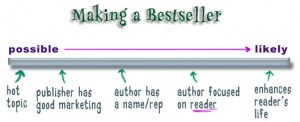
I had a chance to catch up with
David Adderley, the Chair of the conference this year, before this week’s CVCA annual conference in Ottawa. I wanted to find out more about what he thought about some of
the new fund models that are emerging in Canada and just where the business as a whole is going.
Is Venture Capital in Canada at an inflexion point this year? Will we emerge from these two days with an entirely new business in this country? I think the answer is No — and I think that is a good thing. We have stopped looking for a silver bullet or a dramatic sea change, but from what I can see people are ready to get back to work and to find a way to make this work with a model that makes sense for this country.
On with the discussion:
The introduction to the conference says that the world is emerging from a crises and then says re: VC “In response, new innovative models and strategies for creating value are emerging.” Do you think that Venture Capital in Canada is developing a new model? What are some examples?
The investment strategies that many VCs employed during the bull market for technology venture capital of the late 1990s and for the first half of the past decade—which were arguably focused more on a “gold rush” approach of selling companies rather than building them—do not work in a more “normalized” market.
What we are seeing in Canada (and elsewhere) is venture capital returning to its historical roots, when VCs acted like entrepreneurs and applied their domain knowledge and know-how to help start-ups get off the ground. This means VC firms who have small nimble teams of partners with multiple business experiences and technology domain expertise. The investment projects are generally “local”, with founding entrepreneurial teams that have skills developed around the core technology and managerial competencies of the specific geographic region. Professors Kaplan and Lerner’s recent paper,
“It Ain’t Broke: The Past, Present and Future of Venture Capital” is informative on this point.
There should be more focus on investing around the core technology competencies in Canada rather than simply following US trends (e.g. “me too” Web 2.0 companies) without having the depth of talent in Canada to execute. For example, both Toronto & Waterloo have deep domain expertise in Digital Multimedia and Wireless & Mobility around which clusters of VC-backed projects can be built.
As for specific investment strategies, there is renewed focus on the “intensity” versus the “velocity” of capital. This means more of a back-end loaded, milestone-driven approach to investing. Also, the more successful firms are applying a “Seed-to-C” funding approach, with the formation of syndicates that can take companies all the way to cash flow positive, meaning less reliance or no reliance on “late stage” VCs or “B round” VCs.
What do you think the story of Venture capital has been in Canada since the last CVCA?
What we’ve seen in Canada is a restructuring and consolidation of the VC market, resulting in a significant reduction in investment activity over the past number of years. What remains is a much smaller set of mid-sized (sub $200 million) and smaller (sub $50 million) funds. Whether or not this represents the “normalization” of investment activity in Canada remains to be seen.
You’ve seen “declared” interest in Canada by some US funds, but relatively little investment activity from them.
VC plays a key role in any industrialized or emerging economy, driving innovation and job creation in high-growth sectors, as
demonstrated by many academic studies. There does appear to be a growing awareness at the government level that action must be taken if Canada is going to continue to innovate and leverage its R&D strengths, and fund its most promising ideas, entrepreneurs and start-ups.
A new crop of micro-funds have started to emerge in Canada. What role will these funds have to play in the future of VC in Canada.
Yes, a number of “micro funds” have emerged in Canada. They go after what they describe as less capital-intensive projects, or projects where the injection of capital can be very back-end loaded, such that a small investment is made at the beginning, allowing the start-up to attract key industry-specific angels and to secure customer traction before bringing in significant money. This sounds more like the historical way VCs acted rather than necessarily a “new” approach.
I’d also ask whether the emergence of new micro funds in Canada is driven more out of necessity, i.e. an inability to raise significant capital in Canada, versus a systemic need to find a new model for VC funding that works.
Will these funds have a real impact in positioning Canada as a leader in innovation? For Canada to develop the next RIM, we need entrepreneurs, start-ups and investors who are targeting the same kind of ambitious, platform technology projects that have made Silicon Valley an engine of growth for the US economy.






